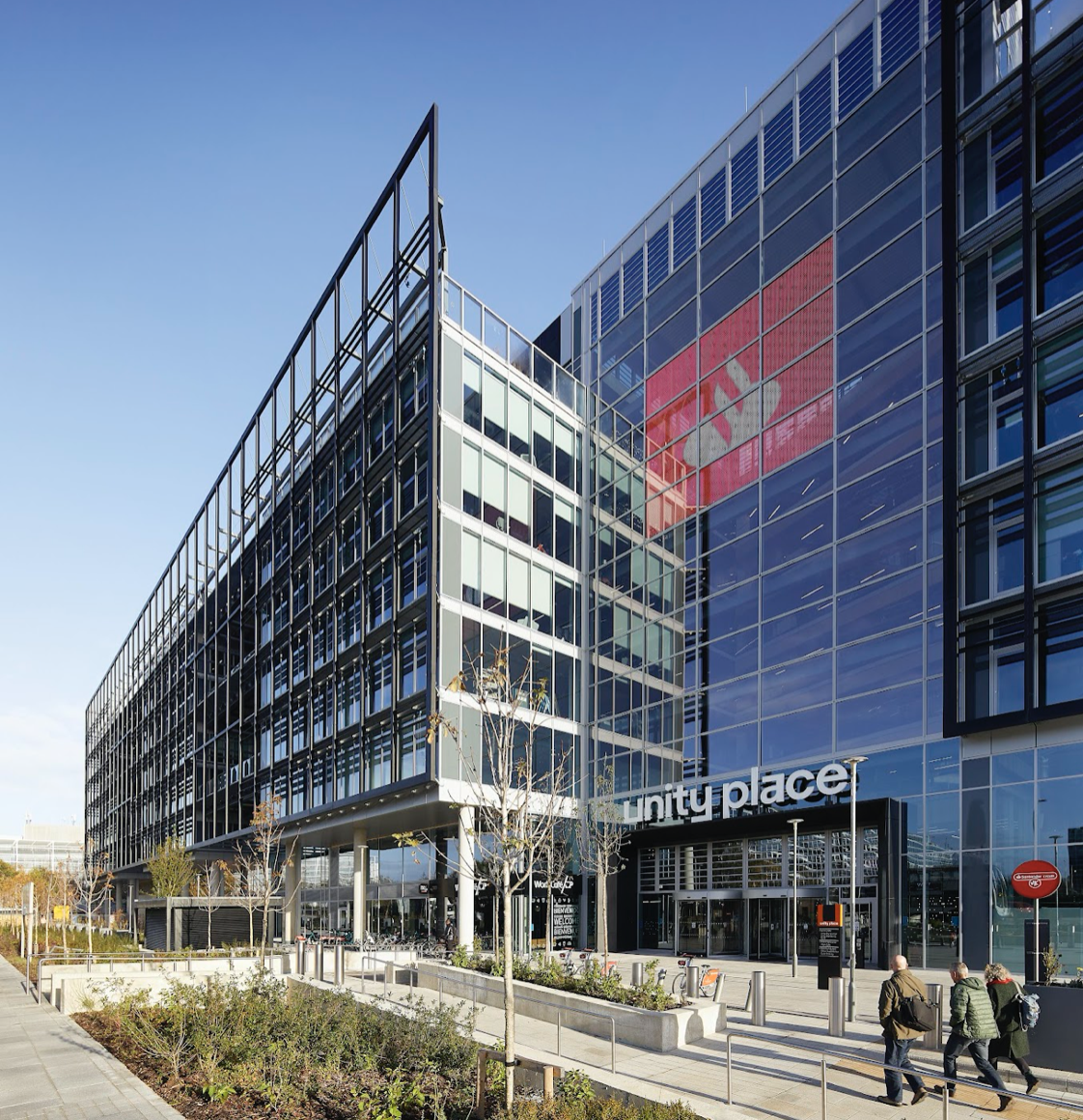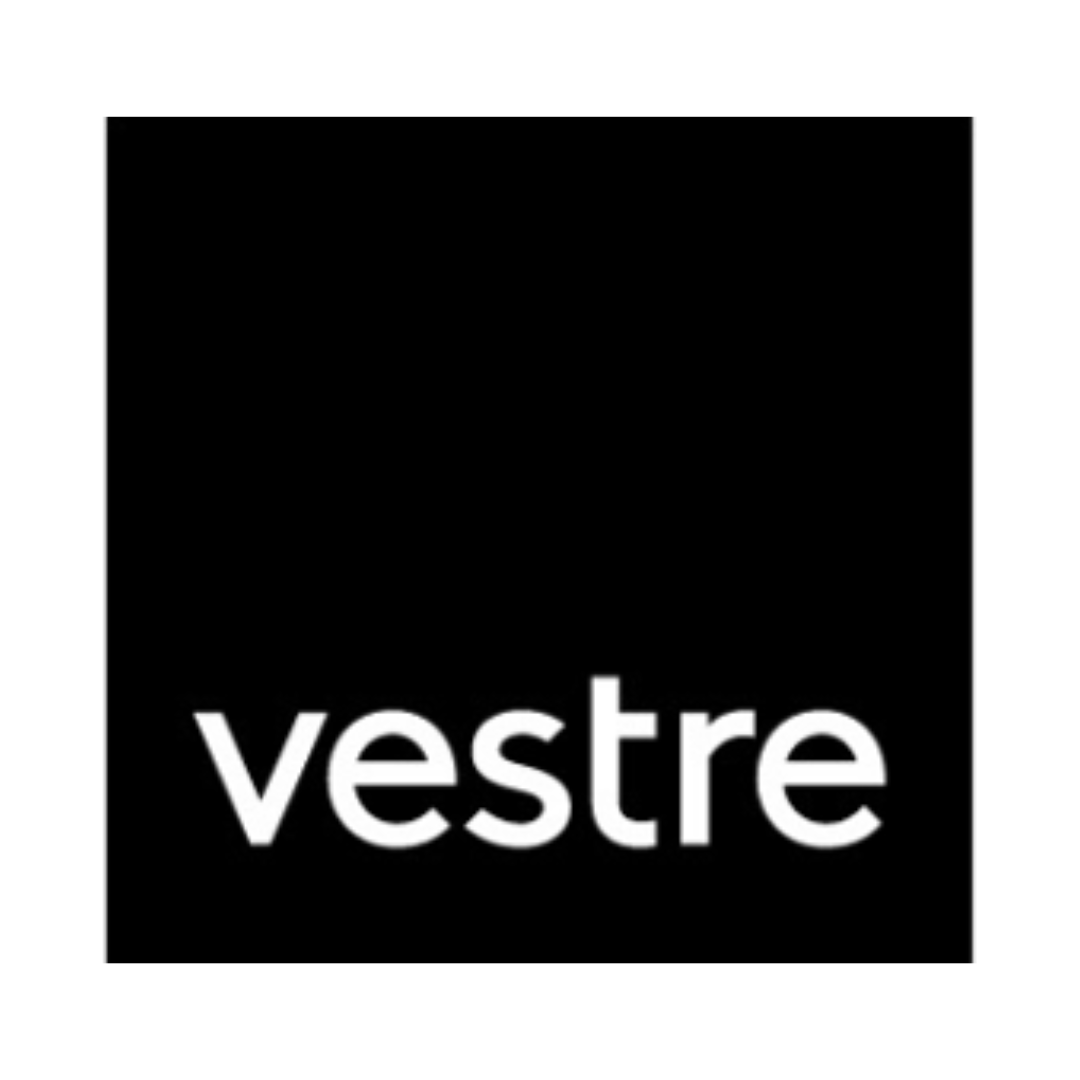Project showcase
Unity Place, Milton Keynes, for Santander UK, with LOM architecture and design

Completed in November 2023 as a new work campus for 6,000 Santander UK employees, the Unity Place development at 200 Grafton Gate in Milton Keynes includes 44,000sqm of office space across eight stories. Designed to achieve BREEAM ‘Excellent’ and WELL ‘Gold’ standard, the £150m project also gives public access to an “urban market,” retail outlet, community spaces, health facilities and a terrace cafe.
Who is on the project team? (designer, consultants, etc)
Client: Santander
UK Architect: LOM architecture and design
Developer: Osborne & Co
Main contractor: SISK Group
Planning consultant: Deloitte
Cost management: Deloitte
Project Manager: Turner & Townsend
Quantity Surveyor: Turner &Townsend
Structural Engineering: WSP
MEP Engineering: WSP
Sustainability Consultant: WSP
Security: WSP
Transport and highways: WSP
Refuse & waste: WSP
Interior Design: LOM architecture and design
Landscape Architect: Murray Associates
Lighting design: Lightivity
Describe the context of this project, its neighbourhood and people?
Unity Place is an 80,000 sqm, mixed-use campus for Santander UK, one of the UK’s leading banks. This paradigm-shifting, corporate headquarters has been designed as a destination for up to 6,000 Santander colleagues across six flexible floorplates, providing inspirational settings for agile, non-territorial workspace. Collaboration is encouraged among other occupiers with a 6,000 sqm co-working floor targeting digital start-ups and creatives, while MK University share specialised learning spaces for students – cultivating a dynamic and inspirational mix of users. This reflects the building’s careful integration of commercial, community, and public space. Visitors and workers alike can use and enjoy an expansive food-market, auditorium, bank, retail spaces, community hall, rooftop restaurant, and health suite. This reflects the building’s careful integration of commercial, community, and public space. Unlike other corporate headquarters, Unity Place welcomes the public inside, curating a vibrant experience for all. Visitors and workers alike can use and enjoy an expansive food-market, auditorium, bank, retail spaces, community hall, rooftop restaurant, and health suite. These spaces benefit from Santander UK’s investment in regional businesses and the local economy. Local, independent food and beverage traders reinvent the traditional staff canteen, and, critically, ground the building in its environment, marking it both a landmark destination for, and gateway into, this vividly evolving city. This has all been delivered through Osborne&Co’s unique ‘Build to Suit’ procurement route, with exceptional value for money, benchmarked well below the cost of equivalent projects.
Describe the context of this project and the point it has reached in its development. Who was there in this place before development, where have they gone, who is there now and who will be there in future? When is the project expected to be complete?
Due for completion in March 2024, the redevelopment of a former car park site has completely reimagined what a corporate workplace can be. Santander UK had previously operated out of four office sites in the Milton Keynes area, and wanted to consolidate its 6,000 strong workforce into a single campus; borne out of the changing landscape across traditional banking, with a market shift in technology and web-based companies. Through a development competition, LOM’s vision, together with Osborne&Co’s build-to-suit (BTS) model, won the opportunity to design a state-of-the-art workplace, helping Santander to retain and attract the best talent by introducing more flexible working practices and inspiring spaces for people to collaborate – while supporting occupants and the wider community with urban food market, shops, auditorium, community hall, health and fitness suite, and co-working spaces for university students (in partnership with MK:U), small businesses, start-ups, and entrepreneurs. The design approach works with the local community to maximise its contribution to the surrounding area, and is redefining the gateway into Central Milton Keynes. Responding to the city’s urban planning and infrastructure qualities, Unity Place represents a much-needed catalyst for local businesses and shows confidence in MK as a destination. A ‘locals first’ initiative prioritises regional businesses, supporting the Milton Keynes local economy and a stronger, more sustainable city centre. Independent food and beverage traders reinvent the traditional staff canteen inside Unity Place, and critically, ground the building in its environment, marking it as a landmark destination and gateway into this vividly evolving city.
How are you seeking to foster community, welcome visitors and attract tenants? How are you responding to changing demographics, behaviour, market context, policy, transport habits and the climate crisis since winning planning?
LOM have embodied placemaking as an overarching design objective to create a safe, healthy, and sustainable development. This is as much a public building as a commercial scheme: in a part of the city that lacks public facilities. Unity Place is designed to offer a range of community uses, from retail and leisure to curated events and exhibitions. The arrival experience is driven by the need to support a wide range of functions and flexibility. For example, mobile reception desks support different scenarios adjusting during the day when an event may benefit from a different location, such as adjacent to the auditorium when there is an event. On the ground and first floor, communal spaces are all publicly accessible. The expansive food market offers healthy food and beverage options, and there is access to a community hall, health suite with gym facilities and studio space, a rooftop wellness walking track, fitness and yoga terrace. Each floor accommodates approximately 900 occupants and the upper workplace floorplates are divided into eight neighbourhood ‘wings’ that support 100-125 occupants in a variety of settings. These neighbourhoods create small ‘communities’ where colleagues recognise each other whilst occupying a non-territorial, agile working environment. The zones to the south of the core provide more active workspaces open to the connecting atria, while slightly smaller neighbourhoods to the north support quieter work settings. All neighbourhoods have access to meeting rooms, innovation space, the quiet area, break out terrace, and the ancillary amenities which include wellbeing and faith rooms.
Festival of Pineapples
24-26 February 2026
Pineapples prize giving night
April
Pineapples at Festival of Place
10 June 2026
© The Pineapples - Tweak Ltd. 124 City Road, London, EC1V 2NX. Tel: 020 3326 7238




